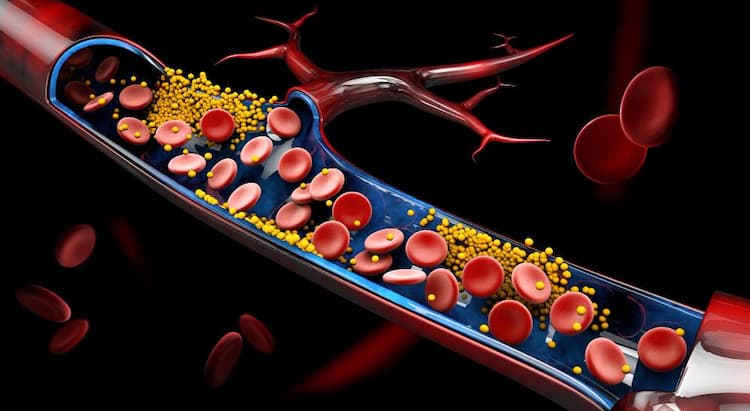Parkinson's Disease - Its signs, symptoms and treatment

Medically Reviewed By
Dr Divya Rohra
Written By Srujana Mohanty
on Jun 27, 2022
Last Edit Made By Srujana Mohanty
on Mar 16, 2024

Parkinson’s Disease is generally touted as an aging neurological disorder that gradually impairs the movements, often manifesting as tremors in the hands and limbs. Approximately 9.8 million people are diagnosed with Parkinson’s Disease as reported in 2022 – at its all-time high. The condition is primarily diagnosed in older people and is a common sign of nerve degeneration due to aging. Despite the lack of prominent initial symptoms, Parkinson’s Disease affects the quality of life in most patients experiencing its progressive stages. This article will explore further details about Parkinson’s disease, the symptoms, causes, and treatment options.
What is Parkinson’s Disease?
Parkinson’s Disease is an age-related nerve degenerative disease that directly affects different parts of the brain, leading to tremors, slowed movements, balance issues, and sometimes speech-related complications. The average age at which a person starts experiencing the symptoms is 60 years, which worsens with time. Also, the condition is more prevalent in men as opposed to women. Although quite rare, there are reports of younger adults around their 20s being diagnosed with Parkinson’s disease. However, you need to realize that the condition is extremely rare and is generally a hereditary complication. Parkinson’s disease is a lot more common than people think. An estimated 1% of aging individuals showcase symptoms of the condition globally. It is a non-curable disease, but an early diagnosis helps manage the symptoms to improve the overall quality of life.
What are the Symptoms of Parkinson’s Disease?
People with Parkinson’s disease often don’t get a diagnosis until it's in its advanced stages. This is primarily due to the lack of symptoms in the earlier stages. However, once the disease starts progressing, the symptoms soon make a complete 360 and start affecting one side of the body first. Some of the most notable Parkinson’s disease symptoms include: Bradykinesia – this translates to slowed down movements, making it very difficult for individuals to get through the simple everyday tasks without taking a lot of time. Many patients have difficulty walking greater distances and even getting up from a chair. Tremor – this is one of the most notable signs of PD. Experiencing tremors, shakes, and trembling in the limbs even when it's at rest is quite common. Stiff muscles – stiffness and rigidness in the muscles can start from any part of the body and eventually affect the patient’s range of motion. Balance issues – experience balance and posture-related issues are quite common with PD. Many patients experience a stooped and sluggish posture. Impaired speech – although not seen in every patient, speech changes should be considered. Slurred, slowed speech is quite common in patients with PD. Also, a patient might have a very monotone speech, which is a lot different from the normal way of their speech. Besides the motor symptoms, a few non-motor symptoms are alarming signs of the onset of PD. They include:
- Orthostatic hypotension,
- Gastrointestinal problems,
- Urinary incontinence,
- Sexual dysfunction,
- Depression,
- Loss of sense of smell,
- Sleep complications,
- Periodic limb movement disorder,
- Trouble focusing.
Since the symptoms of Parkinson’s disease mimic a few other neural degenerative conditions, getting immediate medical examination is crucial. You get a comprehensive diagnosis and also get to rule out any associated complications. So, don’t hesitate to see a doctor if you are experiencing any or all of the above-mentioned symptoms.
What Happens in Parkinson’s Disease?
Simply knowing the symptoms isn’t enough. You must be sitting here thinking, “Why is it happening to my body all of a sudden?” It is a very valid question that the researchers have found answers to. Patients diagnosed with Parkinson’s disease struggle with nerve degeneration, as we mentioned. But, how does it happen, or how does it affect? The disease affects the basal ganglia that are inside the brain. Since this part of the brain is responsible for a lot of motor functions and daily activities, those movements get out of control. Studies have also found that Parkinson’s disease affects the brain’s chemistry as well. People with PD have a very reduced secretion of dopamine in the brain, which affects the normal functioning and communication of the neurons in the brain. The lack of dopamine in the brain causes the patients to experience tremors, shakiness, and tremors. As the disease progresses, the patient’s symptoms worsen, leading to depression and dementia-like symptoms.
What are the Causes of Parkinson’s Disease?
Despite the ongoing research, the exact cause or trigger behind Parkinson’s disease is unknown. The primary linking cause is believed to be the reduced secretion of dopamine and norepinephrine. Some research suggests that a viral attack could contribute to the disease too. Another standout trigger is the excess of Lewy bodies, a type of protein molecule, in the brain of Parkinson’s disease patients. However, there is no conclusive understanding of whether or not these elevated levels have anything to do with the further progression of the disease or not. The two main factors contributing to Parkinson’s disease include: Genetic predisposition – a patient is more likely at risk of having the disease if there is a familial medical history of the same. Specific genetic mutations might also play a critical role in the onset of the disease. Environmental factors – certain toxins and even viruses are related to increasing the risks of this condition, especially in the older age. Currently, the researchers are focused on understanding the chemistry and impacts of Lewy bodies in Parkinson’s disease patients. Studies are looking into a specific protein called alpha-synuclein (a-synuclein), which is found clumped around the Lewy body in PD patients. Whether or not or how it contributes to the progression of the disease is what the researchers are currently focused on.
Induced Parkinsonism
Besides the genetic and idiopathic Parkinson’s disease, there is another condition known as the Induced Parkinsonism. This involves patients who experience similar symptoms to Parkinson’s disease, but they aren’t suffering truly from PD. Some of the most potent causes behind that are:
- Side effects of medications,
- Encephalitis,
- Toxins, and poison ingestion,
- Injury, and trauma.
Also, Parkinson’s disease is not contagious, even though there are certain myths and misconceptions surrounding it.
What are the Stages of Parkinson’s Disease?
At the very beginning of the article, we have mentioned that Parkinson’s disease is often diagnosed at an advanced stage. This is mainly due to the early symptoms being subtle and negligible. Medically, the condition manifests in four stages. Most patients might experience progressive symptoms years or decades after the onset of the disease. According to the Movement Disorder Society-Unified Parkinson's Disease Rating Scale (MDS-UPDRS), Parkinson’s disease happens in five stages:
Stage 1
This affects the non-motor parts of the day-to-day living and signifies the non-motor symptoms in the patient, including dementia, depression, anxiety, and other mental illnesses. This also involves other physical complications like fatigue, constipation, chronic pain, incontinence, etc.
Stage 2
This affects the motor parts of day-to-day living. It affects the day people get their daily work done, their normal movements, and even simple tasks like talking, chewing, maintaining balance and posture, etc.
Stage 3
It generally involves the prominence of the symptoms. The symptoms will become more noticeable and start affecting the daily lifestyle. This involves delayed movements, slowed-down activities, poor posture, balance, etc.
Stage 4
This is where the symptoms are very noticeable and start hindering the patient’s life quite exponentially. Some might even need assistive devices like a walker to get them through their day-to-day life.
Stage 5
This is the most advanced stage and completely diminishes a patient’s quality of life. Some might need round-the-clock assistance, be unable to walk, and need a wheelchair to get them around. Some non-motor symptoms like hallucination, confusion, and delusions affect the patient in this stage.
How is Parkinson’s Disease Diagnosed?
Most diagnoses of Parkinson’s disease occur with a clinical evaluation. Since the symptoms of PD are quite unique and hard to miss by your healthcare provider, the chances are that your doctor will start with a general discussion. They will ask you about the symptoms and review your medical history to understand your overall health better. You might need to provide your family’s medical history too. This helps assess if it’s a genetic issue. Besides the clinical examination, certain diagnostic tests help rule out other complications. These include:
- Blood tests,
- CT scan,
- Genetic testing,
- MRI scan,
- PET scan,
- Spinal tap,
- Skin biopsy.
Sometimes, getting a conclusive diagnosis for Parkinson’s disease is quite difficult. Your doctor might suggest you come in for a few follow-up appointments for further evaluation.
How is Parkinson’s Disease Treated?
Parkinson’s disease isn’t curable. So, the available treatments are primarily for symptom management. Your doctor will likely suggest a combination of treatment options, including lifestyle changes, medications, therapy, and surgical interventions. In severe cases that affect standard activities like speech and balance, your healthcare provider might refer you to speech therapy or occupational therapy to improve the symptoms. Let us discuss the treatment options in detail:
Medications | |
| Type of medication | What it does? |
| Levodopa | Replenishes the dopamine levels in the brain |
| Dopamine agonists | Imitate the functions of the dopamine that’s less in the brain |
| Anticholinergics | Block the parasympathetic nervous system to reduce symptoms like muscle stiffness and rigidity |
| Amantadine | Temporarily reduces the risks of involuntary movements in the body. |
| COMT inhibitors | Prolong the effects of Levodopa to ensure the brain has enough dopamine to process. |
| MAO-B inhibitors | Inhibit the functions of the enzyme monoamine oxidase B, which breaks down the dopamine molecules in the brain. |
Surgical interventions | |
| Type | What it does? |
| Deep brain stimulation | involves the placement of electrodes into the affected parts of the brain. The electrodes are connected to a generator that sends impulses to reduce the symptoms of PD. |
| Pump-delivered therapy | Also known as Duopa, it delivers a permissible dose of levodopa and carbidopa to keep the symptoms in check. |
Besides these, your doctor will also suggest you introduce lifestyle changes, including eating a healthy diet, leading an active lifestyle, and exercising. Also, since injury and trauma are related to Parkinson’s disease, prevent the risks of falls even before you get a diagnosis.
What is the Prognosis of Parkinson’s Disease?
Parkinson’s disease is a very gradually progressive condition. So, while the initial stages happen very slowly, the late stages of the disease can transition in a blink of an eye. The prognosis of this disease is subjective. However, patients diagnosed with PD are at elevated risk of experiencing dangerous falls or even blood clots in the lungs and legs, which can often be fatal. Getting timely and proper treatment relieves the symptoms quite well. However, there is no concrete understanding of the life expectancy of the patients. A study with 140,000 people with Parkinson’s disease found that 64% died during the 6-year span. Patients who experience dementia or memory-related complications with Parkinson’s are at higher risk of early death as well.
FAQs
What does a Parkinson’s Disease Diet Look like?
Maintaining a healthy and balanced diet is a crucial part of the treatment plan for Parkinson’s disease. The dopamine levels can be regulated naturally with foods rich in antioxidants, omega-3s fatty acids, proteins, etc. Your healthcare provider will likely refer you to a nutritionist for a personalized diet plan.
Can Parkinson’s Disease be prevented?
Although there is no conclusive understanding, researchers believe that switches to lifestyle factors, physical exercise, and dietary habits can potentially prevent or delay the onset of the disease in the patients at risk.
How long Does it Take to Recover from Parkinson’s disease?
As said, Parkinson’s disease doesn’t have a cure. The treatment options manage the symptoms, so you might need some time to see the changes in your body and behavior after getting on the treatment.
Conclusion
Parkinson’s disease is a very common and alarming condition affecting millions globally. It is a non-curable disease at this point, but the available treatments and therapy options can help manage the symptoms and improve the patient’s quality of life. If you are experiencing any symptoms, don’t push them under the rug. Instead, talk to a doctor and get on a treatment plan as soon as possible.



